The Great Pyrenees, lovingly referred to as the “Pyrenees,” is just that: Great. Big. Bear-like! They are both regal housemates and avid protectors. These dogs were bred for the mountains, meant to protect the flocks in the border region between France and Spain.
Now, they can make effective guard dogs for those willing to take on the responsibilities that come with their size. Read on to learn more about the Great Pyrenees.
Description of the Great Pyrenees
These dogs are impressive in stature. They are generally a beautiful white color, although they can also have markings of red, grey, or sable. This unique coloring does not keep them from looking like a small bear, though!
Great Pyrenees have distinctive double dew claws on their rear legs. These dew claws sit a few inches above the rest of the foot and protrude more than in other breeds. Unlike other breeds’ dew floppy claws double dew claws are attached by a bone. They serve to help the dog grip when running, jumping, and climbing.
While most dogs’ floppy dew claws pose a danger of being caught and torn, which is why they are generally removed during neutering, removal of the Great Pyrenees’ double dew claws is not recommended, as it is quite painful, and ultimately can be detrimental to the dog. Toenails on these extra claws need to be trimmed regularly, as without friction on the ground, they grow quite long.
Mountain dogs at heart, this breed’s shaggy coat is waterproof and weather-resistant. It’s good for the cold, and tends to keep moisture and dirt out. Surprisingly, it’s not too prone to tangling either.
Life Expectancy and Size
For a giant breed, the Great Pyrenees has a decent life expectancy. Many live to be between 10 and 12 years old. Reputable breeders produce healthier dogs, increasing their life expectancy into these double digits. It is also very important to maintain the pyr’s weight. These big dogs do not need any added stressors on their skeleton.
This breed stands between 25 and 32 inches at the shoulder.
Male and female Pyrenees show drastic differences in size. Females tend to weigh over 85 pounds, while males are almost always over 100 pounds.
Protective Ability
These dogs are the quintessential protectors – though mostly for sheep and other livestock, rather than humans. They are calm and collected, but ready to jump to the family’s protection if need be.
They are confident in themselves, bred to be independent thinkers, often being left alone in the hills without people to tell them what to do. These dogs are bred to stay with a flock of livestock for their whole lives. This means that they are perfectly happy to stay calm until they are needed. Then, they will jump into action quickly.
This also means that Pyrenees can be tricky to train, as they’re not often very keyed into their owners. They are bred for stoic independence, rather than responsiveness to cues.
Some Pyrenees can be overly aggressive, especially with strange dogs and other animals. Socialization from an early age is essential. Otherwise, it is too easy for them to seriously hurt or even kill a small, unsuspecting dog.
Training
Great Pyrenees don’t have much use for training. They turn their noses up at anything they consider to be a silly trick.
However, this is not because of a mischievous streak. They are independent, having been bred to think on their own. Good trainers will use treats to “capture” good behavior, eventually shaping the Pyrenees into a well-trained dog. Harsh training methods will generally lead them to shut down or avoid their owners.
Energy Level
The Great Pyrenees is not a high-energy dog. In fact, they are known to be regal and calm, presiding over the house as if they are in charge. This is a far cry from the energy level of many sheep herding dogs. Guardian breeds are not the same as herders.
The Pyrenees was bred to patrol, and would spend long periods of time up in the mountains with the herds. They are not jumpy or jittery, but rather move into action when the situation calls for it.
Of course, the Pyrenees do need activity to keep fit, both mentally and physically. However, they do not crave exercise like some other breeds.
What Living with a Great Pyrenees is Like
These dogs are something of an enigma. They are calm, yet like to be in control. They can be quite gentle, but also are often aggressive with those outside the clan.
Owning a Pyrenees can be quite enjoyable if you’re a good fit. They are low maintenance in terms of exercise, and generally give off a cool and collected attitude. Of course, they are also quite beautiful. For owners who crave an emotional connection with their dog, a Pyrenees may feel distant. They can be challenging to train, and are ill-suited to city life.
However, they can also be aggressive. A good owner must put adequate time into socializing these fierce mountain dogs. It can be stressful to own a dog that may snap at outside forces that he perceives as threats, whether or not they actually are.
This breed isn’t a good choice for small homes. They need adequate space for their big bodies.
Care of the Great Pyrenees
The Great Pyrenees is a giant breed, and thus requires a bit more responsibility than most dogs. However, for homes with adequate space, and owners with the patience for socialization, they can be truly stoic guardians.
Environmental Needs
These dogs were bred for the mountains. They enjoy the cold and snow most of the time, as coats provide good protection, and does well keeping them clean and dry. However, as big, hairy dogs, they often have trouble in extreme heat. Care needs to be given to keep this dog from getting overheated in the summer heat.
Exercise Needs
It is important to maintain balance in the Great Pyrenees exercise routine.
Most Pyrenees do not crave exercise. However, daily walks can help to keep them fit and avoid boredom. When these dogs are bored, they become quite the handful. Their size means that they can cause a whole lot of damage!
Walking is also a good activity to avoid extra stress on the Pyrenees’ joints. As giant dogs, they are susceptible to bone and joint damage, especially when young. Ease young Pyrenees into work, to avoid injuring their rapidly growing bones. Maintaining this breed’s weight will also help to avoid health problems as they age.
Shedding and Grooming
The Great Pyrenees has a coat that is easy to maintain. It resists tangles, and usually wicks away most water and dirt. They are happy to live their lives as shaggy beasts.
However, this breed does shed. They maintain a low amount of shedding throughout the year, with profuse periods every six months or so, during which they shed their thick undercoat. Much of their hair is white, so it can be quite difficult to clean and it is easily visible on clothing and furniture.
Ideal Home Environment
This breed can be good for families or individuals. However, they do best with an experienced, calm head of house that will not let the Pyrenees’ independence turn into bad behavior. It is absolutely essential that owners teach their dogs lessons in obedience and socialization early, so as to avoid any aggressive tendencies. Owning such a big dog does not come without big responsibilities.
That being said, the Pyrenees can be a sweet dog to live with. They provide a soothing, rock-like quality to many families. The are usually great with their family’s kids and other pets. Trouble usually only arises with outsiders.
Health Concerns
This breed is has a fair number of health concerns. Buying from a reputable breeder is always advised, as many disorders can be screened for in breeding stock.
Joint problems are not uncommon, especially in dogs that are improperly exercised. Slipping kneecaps are also a concern, which can cause a lot of pain.
Other disorders include cancer and bloat, a life-threatening stomach problem. This is true of many large dogs. Some Pyrenees may have neurological or immune problems as well.
Behavior Problems
This breed’s behavior issues often stem from their independent or aggressive attitudes. Thus, obedience and socialization classes are essential. It is always best to approach a behavior specialist with any serious concerns.
Aggression normally manifests towards perceived threats. This is often dogs or people that are not members of the family. Even the Pyrenees’ bark can be terrifying, and send neighbors into a panic.
The Great Pyrenees can be hard to control off leash, and is known to ignore many an owner’s desperate pleas to “come.”

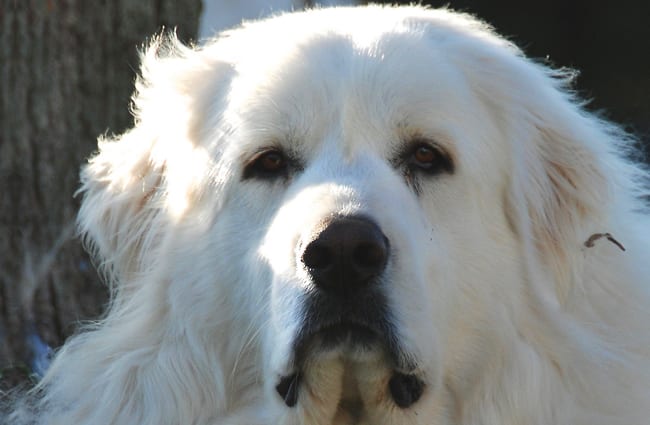
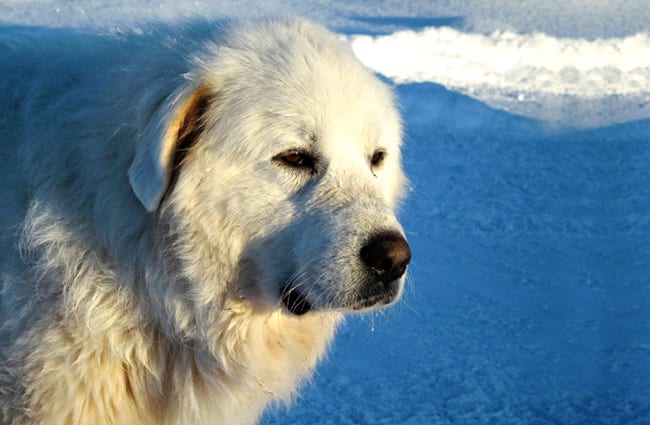
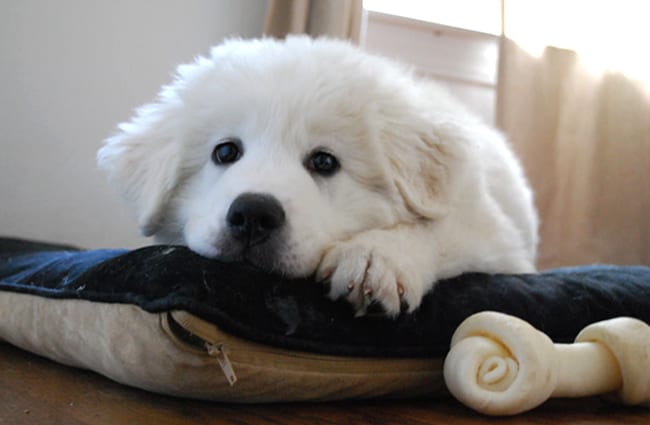


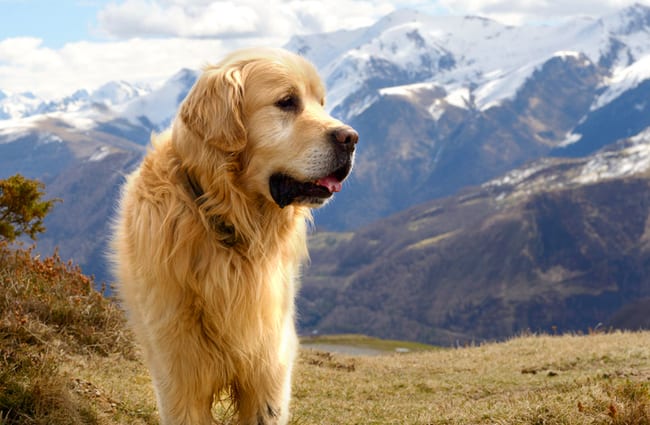
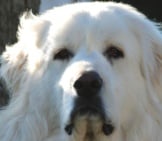
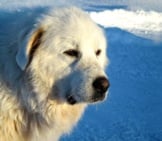


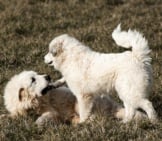














![Red Angus Closeup of a beautiful Red Angus cowPhoto by: U.S. Department of Agriculture [pubic domain]https://creativecommons.org/licenses/by/2.0/](https://animals.net/wp-content/uploads/2020/03/Red-Angus-4-100x75.jpg)

